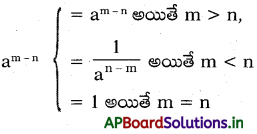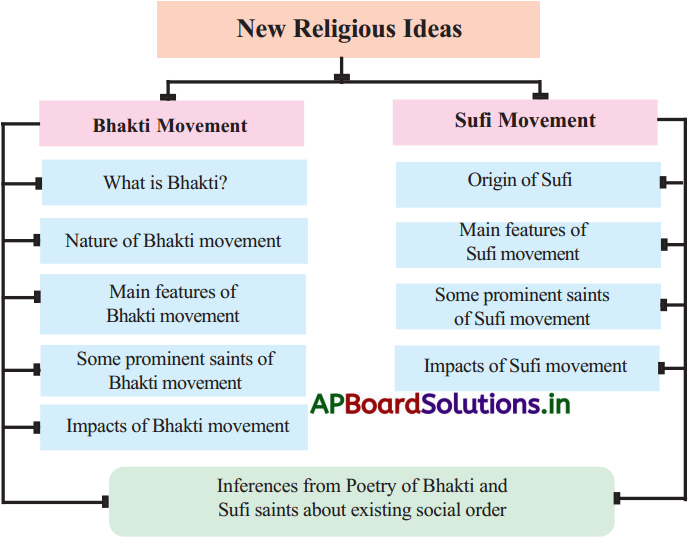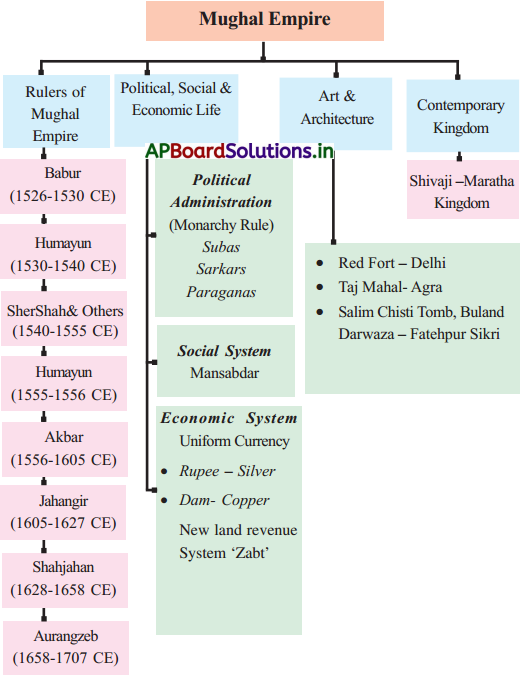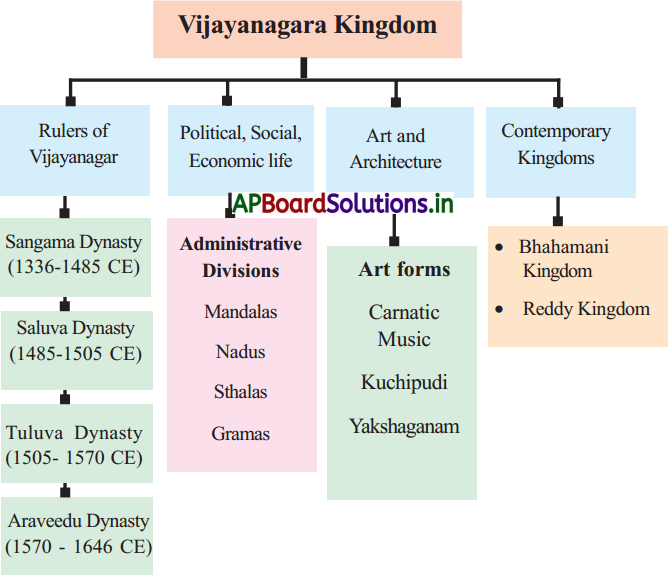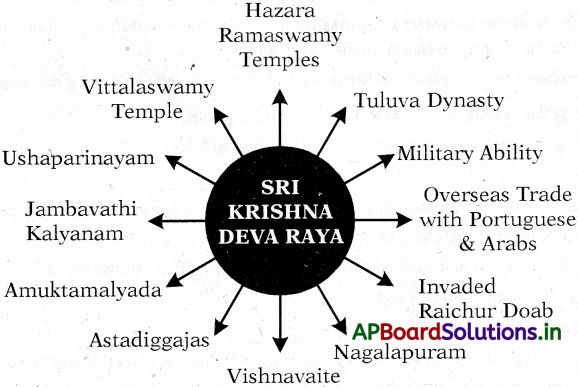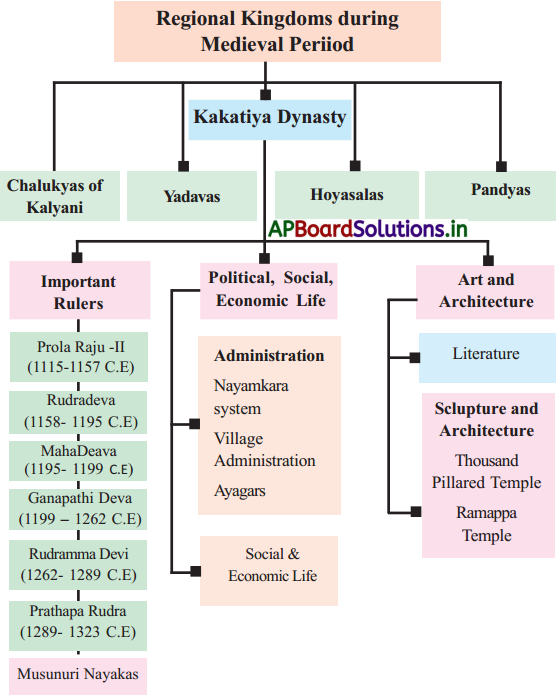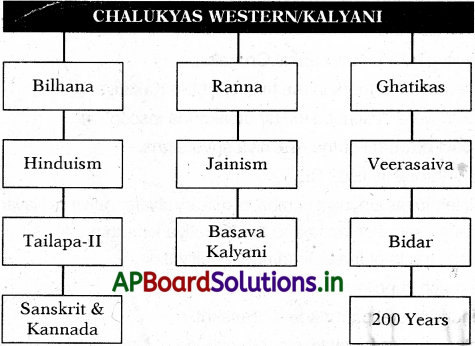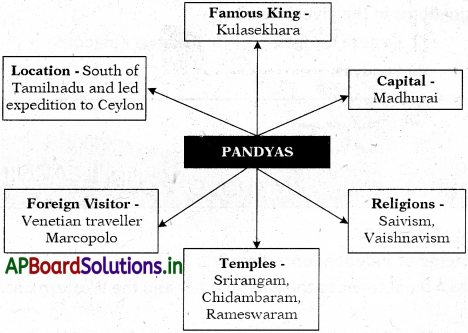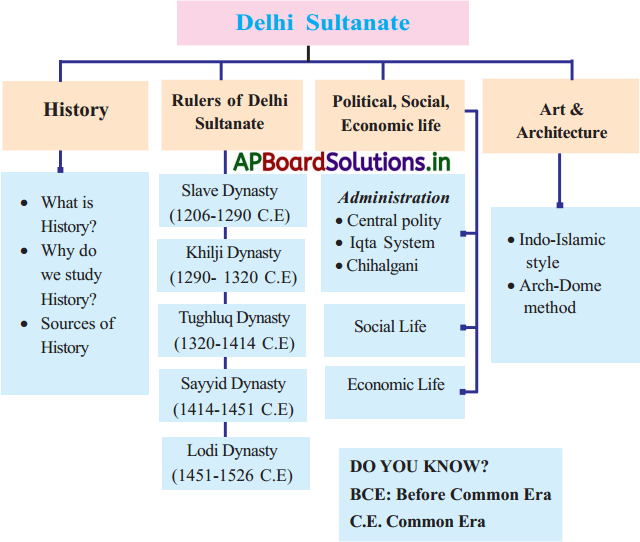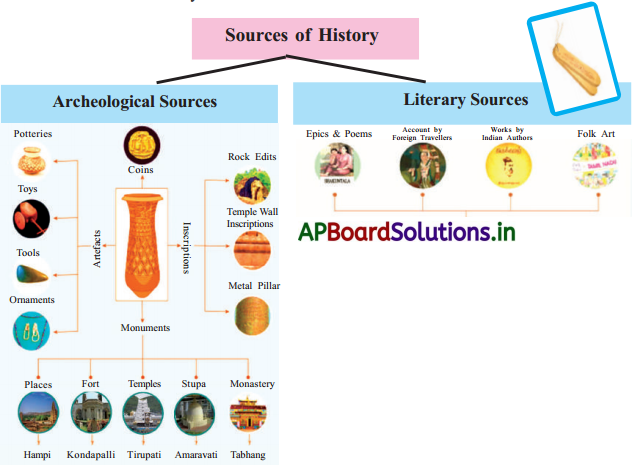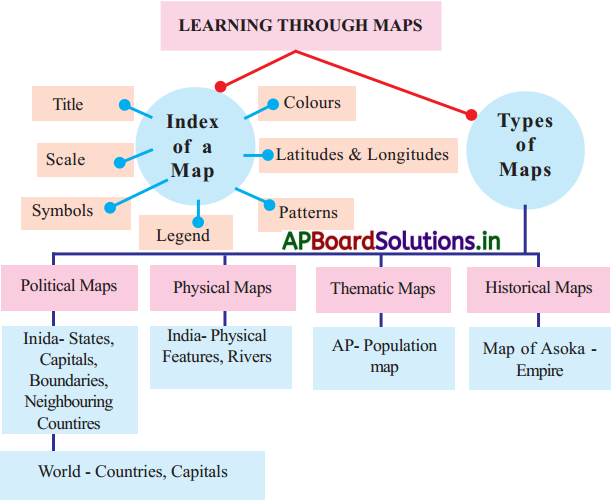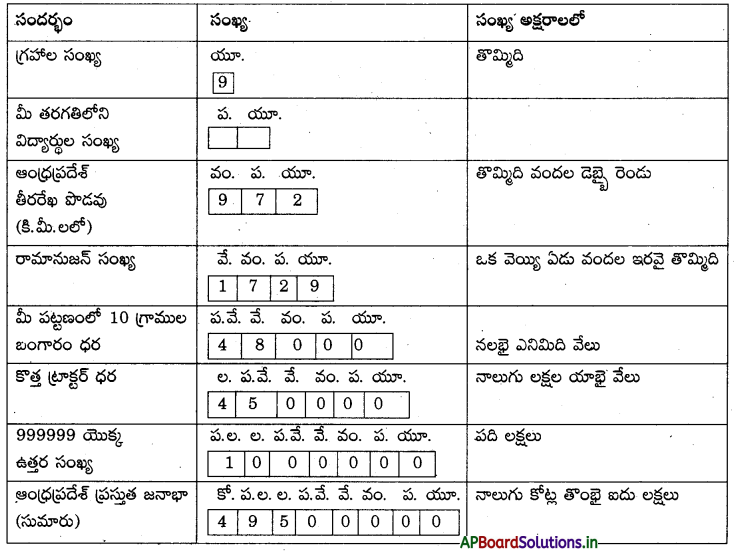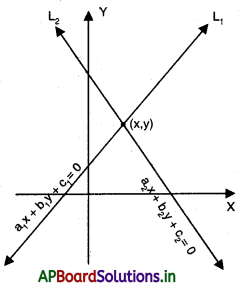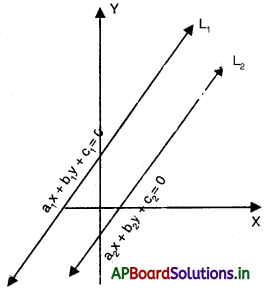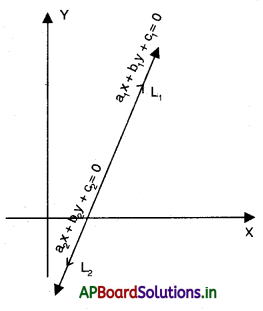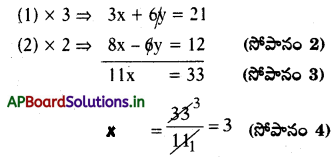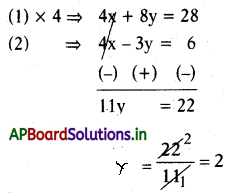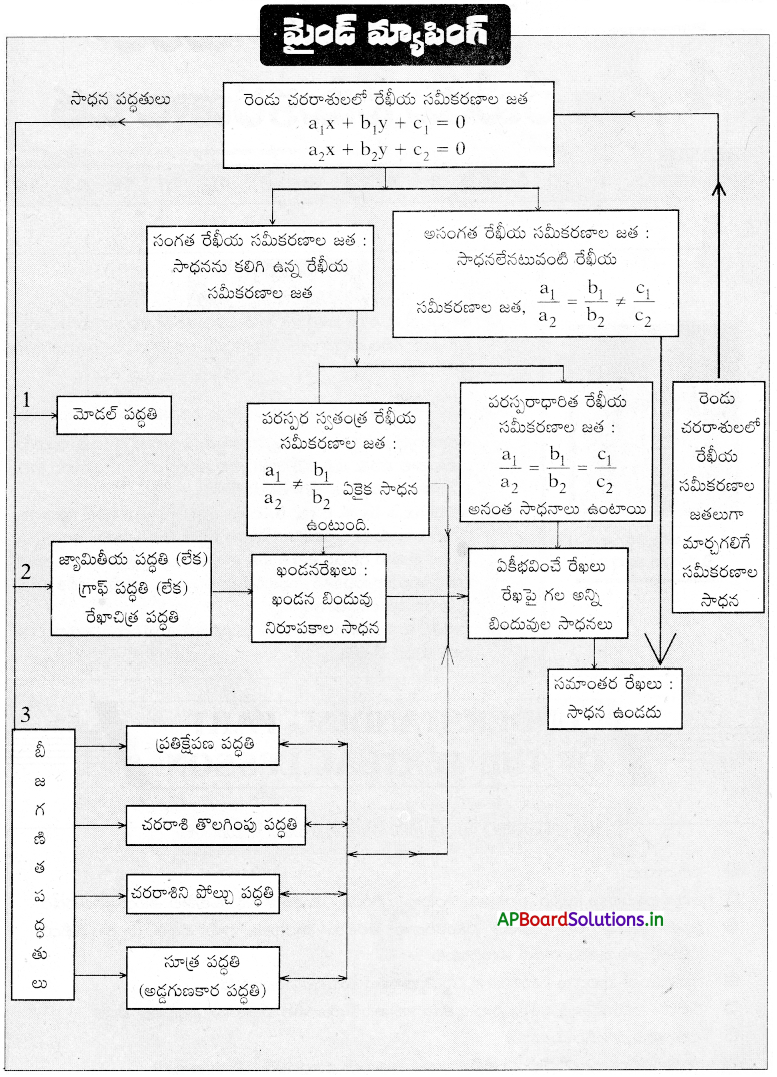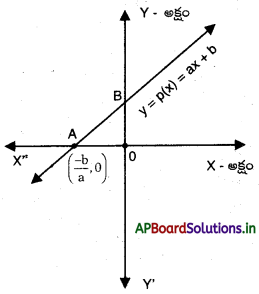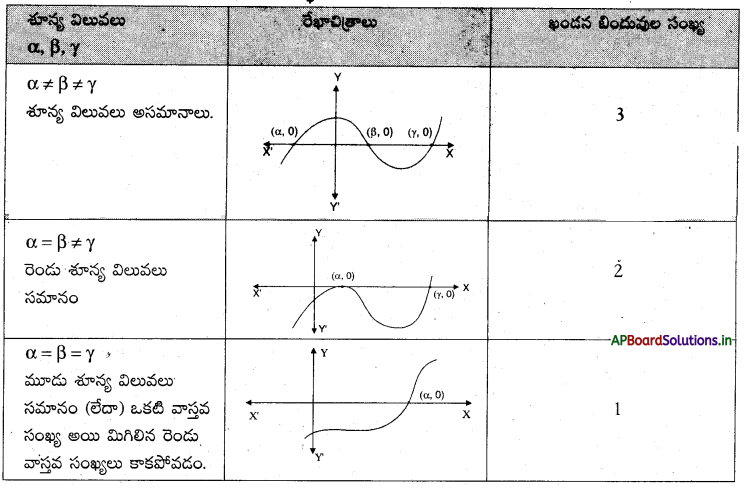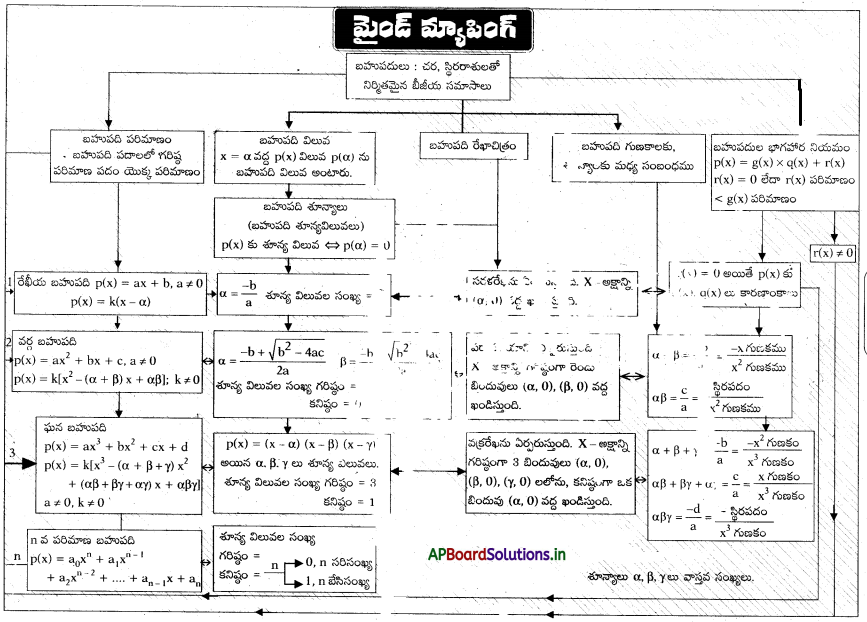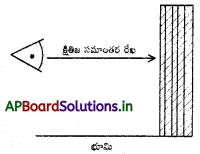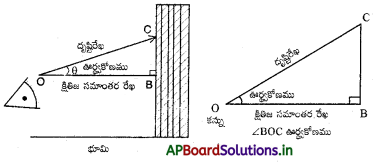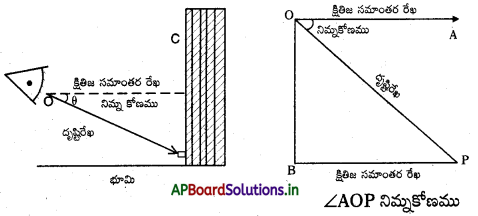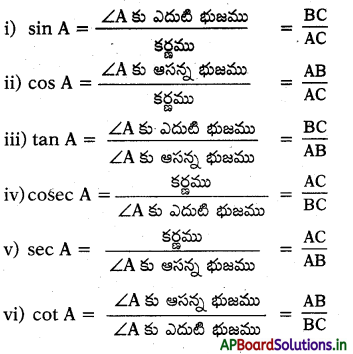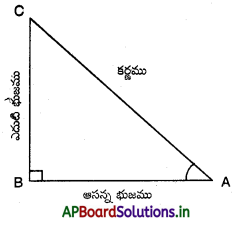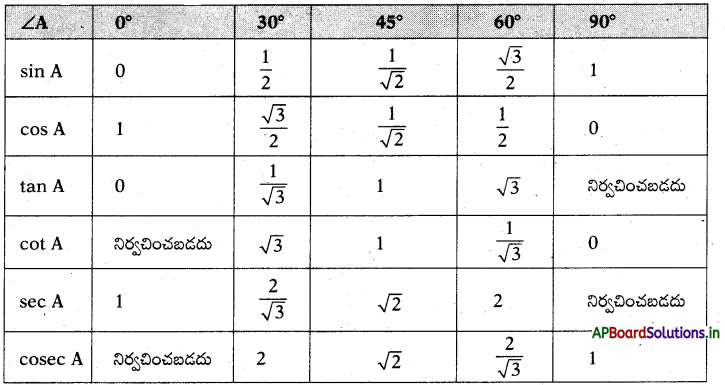Students can go through AP Board 7th Class Maths Notes 9th Lesson బీజీయ సమాసాలు to understand and remember the concept easily.
AP Board 7th Class Maths Notes 9th Lesson బీజీయ సమాసాలు
→ ఒక చరరాశి వివిధ విలువలను తీసుకోగలదని మరియు దాని విలువ స్థిరంగా వుండదని మనం తెలుసుకున్నాం. ఉదాహరణ a, b, x, y, Z మొదలైనవి అదే విధంగా స్థిరరాశులు స్థిర విలువను కలిగి ఉంటాయి. ఉదాహరణకు 6, 8, -10 మొదలైనవి కొన్ని స్థిరాంకాలు.
→ ఒక సమాసము యొక్క ప్రతి పదం కూడా ఒక స్థిరపదం అయితే, ఆ సమాసాన్ని సంఖ్యా సమాసము అని అంటారు.
→ ఒక సమాసములో కనీసం ఒక బీజీయ పదం ఉన్నట్లయితే అప్పుడు ఆ సమాసాన్ని బీజీయ సమాసము అని అంటారు.
→ ఒకే బీజీయ కారణాంకాలు కలిగిన పదాలను సజాతి పదాలని అంటారు. వేరు వేరు బీజీయ కారణాంకాలు కలిగిన పదాలను విజాతి పదాలని అంటారు.
→ ఒకే ఒక పదాన్ని కలిగి ఉన్న బీజీయ సమాసాన్ని ఏకపద సమాసము లేదా ఏకపది అని అంటారు. రెండు పదాలు ఉండే బీజీయ సమాసాన్ని ద్విపది అని అంటారు. మూడు పదాలు ఉండే బీజీయ సమాసాన్ని త్రిపది అని అంటారు.
→ ఒక బీజీయ సమాసములో చరరాశి యొక్క ఘాతాంకము, ఋణేతర పూర్ణసంఖ్య అయినపుడు దానిని బహుపది అంటారు.
→ ఒక సమాసములో, పదాలలోని చరరాశుల ఘాతాలు అవరోహణ క్రమంలో ఉండే విధంగా పదాలను అమర్చినట్లయితే, ఆ సమాసము ప్రామాణిక రూపంలో ఉంటుందని చెప్పబడుతుంది.
→ ఒక బీజీయ సమాసములో ఏ రెండు పదాలు జాతి పదాలు కానపుడు, అది సూక్ష్మరూపంలో ఉంది అని అంటాము.
→ రెండు లేదా అంతకంటే ఎక్కువ సమాసాల మొత్తం, అందులోని అన్ని పదాల యొక్క సంఖ్యాగుణకాల యొక్క మొత్తమునకు సమానము.
![]()
→ రెండు లేదా అంతకంటే ఎక్కువ సమాసాల భేదం, అందులోని అన్ని పదాల సంఖ్యా గుణకాల భేదానికి సమానము.
→ సమాసము యొక్క విలువ, అందులో ఉన్న చరరాశులకు తీసుకోబడ్డ విభిన్న విలువలపై ఆధారపడి ఉంటుంది.
→ స్థిరరాశి : విలువ స్థిరంగాగల రాశులను స్థిరరాశులు అంటారు. ఉదా : 2, 8, -10,
→ చరరాశి (చలరాశి) : విలువ స్థిరంగా లేకుండా సందర్భాన్ని బట్టి వివిధ విలువలను తీసుకొనే రాశిని చరరాశి అంటారు. వీటిని సాధారణంగా చిన్న ఆంగ్ల అక్షరాలతో సూచిస్తారు. ఉదా : 2, x, y. …….
→ పదము : స్థిరరాశులు లేదా చరరాశులు లేదా గుణకారం, భాగహారంతో కూడిన ఈ రెండింటి కలయిక అనేది ఒక పదము.
ఉదా : 5, x, 4x, -11x2y, \(\frac{12 x^{2}}{5}\), 13\(\frac{\mathrm{ab}}{\mathrm{c}}\), 13, …….
వీటిలో 5, 13, ….. లను సంఖ్యాపదాలు అని, x, 4x, – 11x2y, \(\frac{12 x^{2}}{5}\),13\(\frac{\mathrm{ab}}{\mathrm{c}}\) ….. లను బీజీయ పదాలు అని అంటారు.
→ సమాసము : సమాసము సంఖ్యాపదాలు, బీజీయ పదాలు లేదా +, – లతో కూడిన ఈ రెండింటి కలయికను సమాసము అంటారు.
ఉదా : 5, \(\frac{9}{7}\), x, y + 9, 2 + 3 – 6, 5c – 4, \(\frac{5}{x}\) + 7y – z, 3x2 – 4x + 9……
→ ఒక సమాసంలోని అన్ని పదాలు సంఖ్యాపదాలైన దానిని సంఖ్యా సమాసం అంటారు.
ఉదా : 5, \(\frac{9}{7}\), 2 + 3 – 6, ………
→ బీజీయ సమాసం : ఒక సమాసంలో కనీసం ఒకటైన బీజీయ పదము ఉన్నట్లయితే ఆ సమాసాన్ని బీజీయ సమాసం అంటారు.
ఉదా : x, y + 9, 5C – 4, \(\frac{5}{x}\) +7y – z, ………..
→ గుణకము : ఒక బీజీయ పదంలో ఒక సంఖ్య లేదా ఒక బీజీయ కారణాంకము లేదా ఆ రెండింటి లబ్దము ఆ పదం యొక్క “గుణకము” అవుతుంది.
ఉదా : 7xy లో
- xy గుణకము లేదా సంఖ్యా గుణకము 7.
- y గుణకము = 7x
- x గుణకము = 7y
- 7X గుణకము =y
- 7y గుణకము = x
- 7 యొక్క గుణకము లేదా బీజీయ గుణకం = xy
→ సజాతి పదాలు : ఒకే బీజీయ గుణకమును కలిగిన పదాలను సజాతి పదాలు అంటారు.
ఉదా :
- 6X, – 8x, x సజాతి పదాలు (అన్ని పదాల యొక్క బీజీయ గుణకం = x)
- -7x2y, 5x2y, 3x2y సజాతి పదాలు (అన్ని పదాల యొక్క బీజీయ గుణకం x2y)
→ విజాతి పదాలు : ఒకే బీజీయ గుణకమును కలిగి ఉండనటువంటి పదాలను విజాతి పదాలు అంటారు.
ఉదా :
- 6x, – 8y, Z లు జాతి పదాలు.
- -7x2y, 5x2y2, 3xy లు విజాతి పదాలు.
→ బీజీయ సమాసాల రకాలు : బీజీయ సమాసాలను ఆ సమాసంలోని పదాల సంఖ్యను బట్టి ఏకపది, ద్విపది, త్రిపది, బహుళపది, …….. గా విభజించవచ్చును.
- ఏకపది : ఒకే ఒక పదంను కలిగిన బీజీయ సమాసాన్ని ఏకపది అంటారు.
ఉదా : 5x2y, 11\(\frac{x}{y}\), – 8t, …….. - ద్విపది : రెండు విజాతి పదాలను కలిగిన బీజీయ సమాసాన్ని ద్విపది అంటారు.
ఉదా : x + y, 5 + p, 6y + \(\frac{7}{x}\) a – 7b …… - త్రిపది : మూడు విజాతి పదాలను కలిగిన బీజీయ సమాసాన్ని త్రిపది అంటారు.
ఉదా : x + y + 2, 7a – \(\frac{8}{b}\) + c, 8m – 7n + 6. ……
![]()
→ బహుళపది : ఒకటి కన్నా ఎక్కువ బీజీయ పదాలు కలిగిన బీజీయ సమాసాన్ని బహుళపది అంటారు.
ఉదా :
- x + y, 7x2 – \(\frac{4}{y}\) + 8, 3x2/3 + 9y2 + 3x – 9
- x2 + y2 + z3 + 9, ……….
→ బహుపది : ఒక బీజీయ సమాసంలో చరరాశి యొక్క ఘాతాంకము రుణేతర పూర్ణసంఖ్య అయితే దానిని బహుపది అంటారు.
ఉదా : x + y, x2 + y2 + z3 + 9, – 3xy + y2 + x3, …………
- 7x2 – \(\frac{4}{y}\) + 8 అనునది బహుళపది అవుతుంది. కాని బహుపది కాదు. ఎందుకనగా 7x2 – + + 8 =
7x2 – 4y-1 + 8 గా రాయవచ్చు. ఇందులో y యొక్క ఘాతాంకము ‘-1’. ఇది ఒక రుణ సంఖ్య. - 3x2/3 + 9y2 + 3x – 9 కూడా బహుళపది, కాని బహుపది కాదు. ఎందుకనగా 3x2/3 లో X యొక్క ఘాతాంకము పూర్ణసంఖ్య కాదు.
గమనిక : బహుపదులు అన్నీ బహుళపదులు అవుతాయి.. కాని, బహుళపదులు అన్నీ బహుపదులు కావు.
→ బీజీయ సమాసాల సూక్ష్మరూపం : ఒక బీజీయ సమాసంలో ఏ రెండు పదాలు సజాతి పదాలు కానపుడు, అది సూక్ష్మరూపంలో ఉంది అని అంటాము.
ఉదా :
- 7x + 8y + 9, సూక్ష్మరూపంలో కలదు.
- 9x + 8y – 2x + 9 సూక్ష్మరూపంలో లేదు. ఎందుకనగా ఇందులో 9x, – 2x అనే రెండు సజాతి పదాలు కలవు.
బీజీయ సమాసాలను సూక్ష్మరూపంలో రాయడానికి మనం సజాతి పదాలను కూడడం లేదా తీసివేయడం అనే పరిక్రియలను ఉపయోగిస్తాము.
→ బీజీయ సమాసాల కూడిక (సంకలనం) : బీజీయ సమాసంలోని సజాతి పదాల సంఖ్యా గుణకాలను కలిపి మొత్తం యొక్క సంఖ్యా గుణకంగా రాసి బీజీయ గుణకాన్ని అలాగే రాస్తాము.
ఉదా-1: 7x మరియు 8x లను కూడుము.
7x + 8x
(7 + 8 = 15)
7x + 8x = 15x
ఉదా-2 : 7x2 + 9y మరియు 2x2 – 5y లను కూడండి.
7x2 + 9y + 2x2 – 5y
7x2 + 2x2 + 9y – 5y (సజాతి పదాలను ఒకచోట రాయడం)
(7 + 2 = 9, 9 + (-5) = 4)
= 9x2 + 4y
బీజీయ సమాసాల సంకలనానికి రెండు పద్ధతులు కలవు. అవి :
- అడ్డు వరుస పద్ధతి (పంక్తి పద్ధతి)
- నిలువు వరుస పద్ధతి (దొంతి పద్ధతి)
ఉదా-1: 7x మరియు 8x లను కూడండి.
అడ్డు వరుస పద్దతి : 7x + 8x = 15x

ఉదా-2 : 7x2 + 9y మరియు 2x2 – 5y ల మొత్తంను కనుగొనుము.
అడ్డు వరుస పద్ధతి : (7x2 + 9y) + (2x2 – 5y)
7x2 + 9y + 2x2 – 5y
7x2 + 2x2 + 9y – 5y
9x2 + 4y.
నిలువు వరుస పద్దతి : 2 (సజాతి పదాలను సజాతి పదాల కింద రాయాలి.)
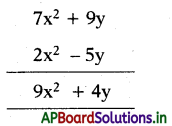
→ బీజీయ సమాసాల తీసివేత (వ్యవకలనం) : ఒక బీజీయ సమాసాన్ని మరొక బీజీయ సమాసం నుండి తీసివేయడం అనగా దాని సంకలన విలోమాన్ని కూడడము.
ఉదా-1:
7x నుండి 3x ను తీసివేయడం అనగా 7x కు 3x యొక్క సంకలన విలోమం – 3x ను కూడడము.
7x – 3x = 7x + (- 3x) = 4x .
ఉదా-2 :
7a + 6b + 4 నుండి 5a – 2b – 5 ను తీసివేద్దాము .
5a – 2b – 5 యొక్క సంకలన విలోమం
– (5a – 2b – 5) = – 5a + 2b + 5
ఇప్పుడు 7a + 6b + 4 నుండి 5a – 2b – 5 ను తీసివేయడానికి
7a + 6b + 4 నకు 5a – 2b – 5 యొక్క సంకలన విలోమాన్ని కూడవలెను.
(7a + 6b + 4) – (5a – 2b – 5)
= (7a + 6b + 4) + (-5a + 2b + 5)
= 7a + (-5a) + 6b + 2b + 4 + 5
= 2a + 8b + 9
→ బీజీయ సమాస ప్రామాణిక రూపం : ఒక బీజీయ సమాసంలోని పదాల యొక్క ఘాతాంకాలు అవరోహణ క్రమంలో ఉండే విధంగా పదాలను అమర్చితే అప్పుడు ఆ సమాసము ప్రామాణిక రూపంలో ఉంది అంటారు. ఉదా : 2x + 3x3 – 2 + 8×2 సమాసాన్ని ప్రామాణిక రూపంలో రాయగా 3x3 + 8x2 + 2x – 2.
→ బీజీయ సమాస విలువ : బీజీయ సమాసంలోని చరరాశిని ఇచ్చిన విలువలో ప్రతిక్షేపించడము వలన వచ్చు సంఖ్యావిలువ ఆ సమాసము యొక్క విలువ అవుతుంది.
ఉదా : x = 2 అయిన 2x + 3 సమాస విలువ
2(2) + 3 = 4 + 3 = 7
